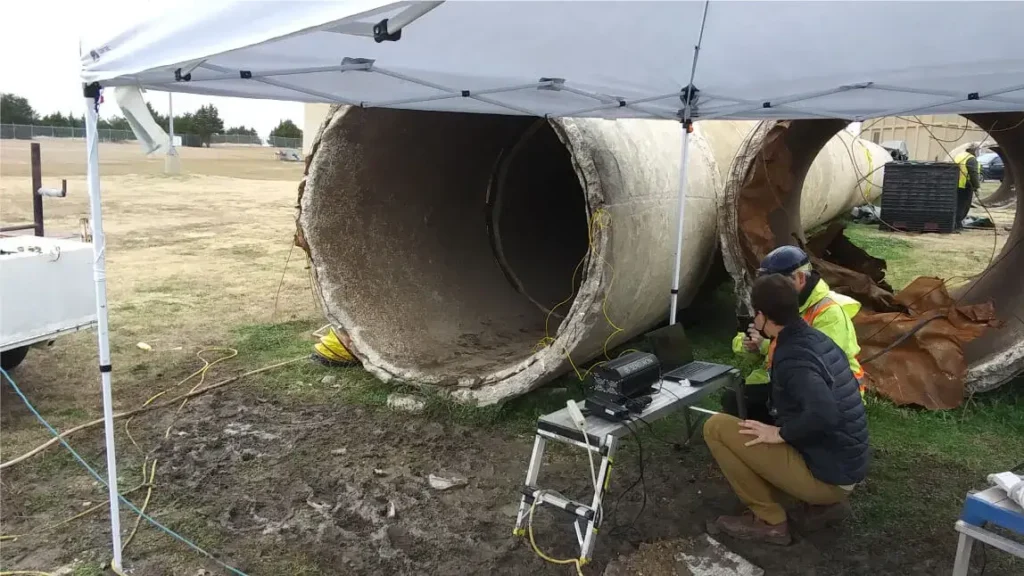In precision engineering, accuracy and durability are non-negotiable. Traditional gauges, though long trusted, often underperform in demanding conditions. Their vulnerability to corrosion, limited sensing range, and potential for signal degradation make them less reliable for critical applications. In sectors like aerospace, energy, and civil infrastructure, a single gauge failure can compromise data integrity or lead to structural issues. These limitations highlight the need for more resilient, comprehensive sensing technologies in high-stakes environments.
As industries evolve and infrastructures become smarter, the need for advanced sensing technologies has never been greater. At Sensuron, we recognize the constraints of legacy systems and have developed distributed fiber optic sensing (DFOS) solutions engineered to withstand harsh environments, deliver real-time insights, and outperform conventional Strain Gauges. Our rugged DFOS systems offer engineers the tools to move from limited single point sensing to continuous, accurate monitoring across entire structures, enhancing safety, design optimization, and operational efficiency.
Why Traditional Gauges Struggle in Harsh Environments
- Corrosion and Environmental Degradation
Conventional sensors are highly vulnerable to moisture, extreme temperatures, and chemical exposure. Over time, corrosion and degradation of their metallic components compromise sensor accuracy and structural adhesion, leading to false readings or complete failure, especially in energy and aerospace applications where durability is critical.
- Physical Detachment from Surfaces
Improper bonding or long-term exposure to mechanical stress can cause traditional sensors to peel away from surfaces. This detachment breaks the connection between the structure and the sensor, rendering measurements inaccurate. In dynamic or vibrating environments, this is a common failure point requiring frequent inspection and maintenance.
- Calibration Drift Over Time
Many legacy systems require routine recalibration to maintain accuracy. Environmental factors like temperature shifts, electromagnetic interference, and material fatigue contribute to calibration drift. This not only affects data reliability but also increases labor and downtime. Sensuron’s fiber optic systems reduce the need for recalibration, offering consistent accuracy with less maintenance.
- Limited Data Resolution
A single-point sensor gives an incomplete view of overall structural performance. This results in blind spots in complex designs where stress can shift unpredictably. In contrast, distributed fiber optic systems deliver continuous, real-time data across entire structures.
- Complexity in Large-Scale Deployment
Expanding traditional sensor networks involves complicated wiring, added weight, and increased installation time. Sensuron simplifies this process with lightweight fiber optics that monitor entire structures with a single sensing fiber — ideal for large aerospace components or infrastructure spanning vast areas.
The Sensuron Difference in Rugged Sensing
Our fiber optic sensing platforms are built with durability at their core. Unlike legacy technologies, our systems are immune to electromagnetic interference and are unaffected by corrosion. The energy sector benefits from long-term reliability with minimal maintenance, while aerospace programs rely on our systems for real-time, in-flight structural monitoring. In civil engineering, our technology enables smart infrastructure capable of continuous health assessment.
Our DFOS systems go beyond measuring just strain—they can also monitor temperature and deflection. This versatility eliminates the need for multiple sensors, simplifying system architecture. When you deploy our technology, you’re not just upgrading your tools; you’re transforming your monitoring strategy. We empower engineers to make more informed decisions, from prototype validation to operational maintenance.
Resilient Sensing for Critical Applications
Energy systems face high thermal loads, corrosive materials, and vast coverage areas. In this domain, our rugged fiber optic systems offer a lightweight solution that provides continuous monitoring without compromise. Aerospace applications demand real-time, in-flight sensing of structural integrity. Our DFOS technology is already trusted by NASA and aerospace leaders to provide accurate, reliable data under high vibration and temperature variations.
Civil structures such as bridges, tunnels, and dams require long-term monitoring to prevent catastrophic failures. With Sensuron’s fiber optic networks, engineers gain a dynamic, high-resolution view of structural behavior, ensuring safety and extending asset lifespan. Where legacy systems would need thousands of point sensors and complex wiring, our systems require just one or a few sensing fibers, streamlining deployment and maximizing insight.
In a world where engineering decisions cannot afford uncertainty, the limitations of Strain Gauges are becoming more evident. At Sensuron, we offer a future-ready alternative through rugged distributed fiber optic sensing systems. Whether monitoring power grids, aircraft, or critical infrastructure, our solutions deliver unmatched reliability, high resolution, and efficiency, ensuring that engineers are equipped with the data they need when it matters most.

